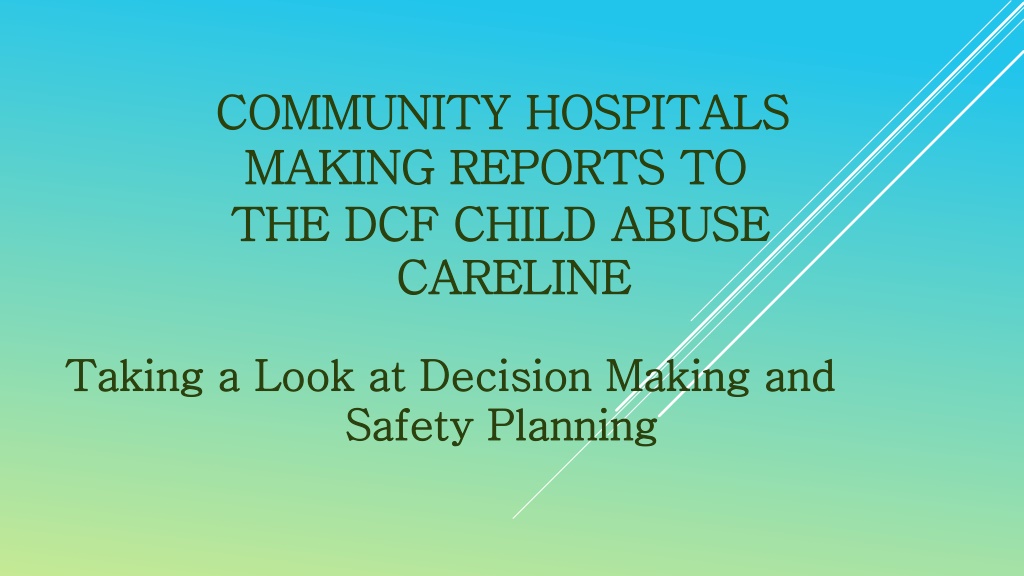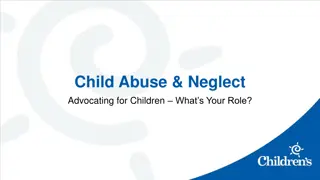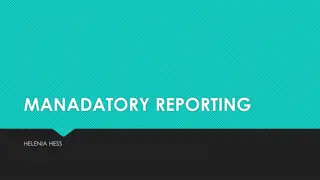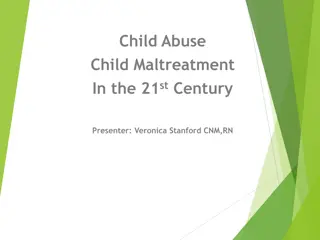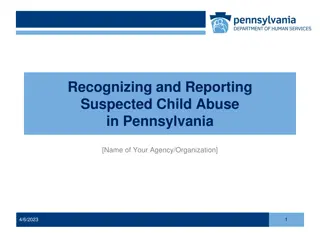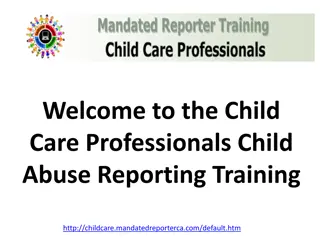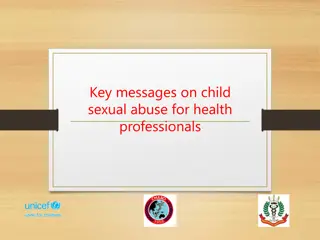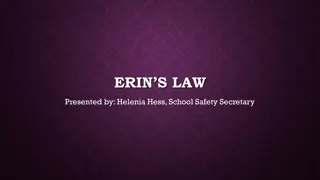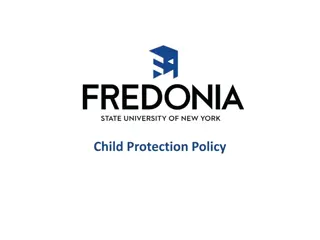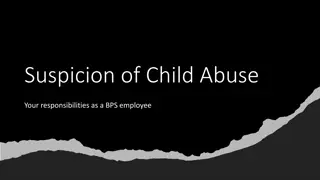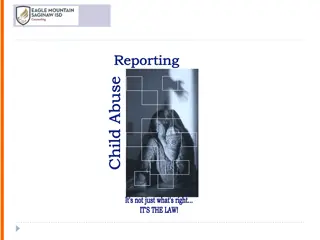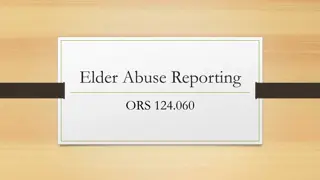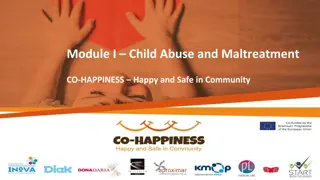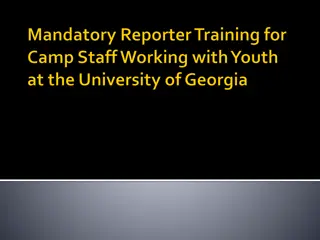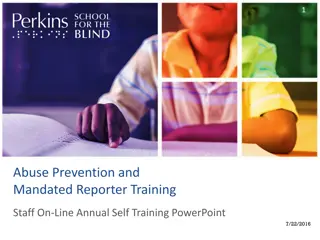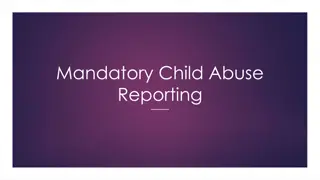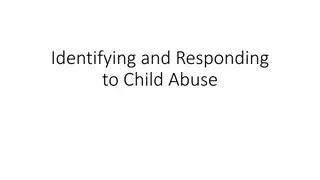Understanding Decision Making and Safety Planning in Reporting Child Abuse
Community hospitals play a critical role in reporting child abuse to the Department of Children and Families (DCF) Careline. The process involves mandated reporters, gathering essential information, making decisions based on safety factors, and utilizing DCF services and service providers. Ensuring accurate reporting and following safety protocols are key to protecting children at risk of abuse or neglect.
Download Presentation

Please find below an Image/Link to download the presentation.
The content on the website is provided AS IS for your information and personal use only. It may not be sold, licensed, or shared on other websites without obtaining consent from the author. Download presentation by click this link. If you encounter any issues during the download, it is possible that the publisher has removed the file from their server.
E N D
Presentation Transcript
COMMUNITY COMMUNITY HOSPITALS MAKING MAKING REPORTS TO REPORTS TO THE THE DCF CHILD ABUSE DCF CHILD ABUSE CARELINE CARELINE HOSPITALS Taking a Look Taking a Look at at Decision Making Decision Making and Safety Planning Safety Planning and
THE THE CARELINE CARELINE In the 2017 calendar year, 109,000 calls, half (54,000)were reports of suspected abuse/neglect. 27,000 accepted for services Over the past 5 years call volume increased on an average of 2,000 calls per year. Calls into the Hospital dedicated line 8,800 in 2017 Critical Incidents a category of report involving serious injury due to abuse/neglect, DMST, death of child/parent. In 2017 - 496 Critical Incidents Staffing Number of 100 across the operation, which included SIU and Background Checks 1
MANDATED REPORTERS Reports of alleged abuse, neglect, and uncared for IPV - Intimate Partner Violence FARS vs Traditional Track for Investigations Information that helps the Careline social work staff to understand Medical & Layman s terms of injuries. Other concerns, i.e. neglect, uncared for, caregivers presentation. Our Wish List - Speaking to the examining provider, or making sure the reporter has all the details from the exam, as well as a clear understanding of the medical /social concerns. Things get lost in transition and translation. 2
INFORMATION NEEDED WHEN REPORTING ALLEGED ABUSE/NEGLECT The Story The Story Who was the caretaker at the time of the incident Who was the caretaker at the time of the incident Accidental Accidental v.s v.s. Non Accidental . Non Accidental Who is the person responsible or person entrusted for the Who is the person responsible or person entrusted for the child s well being? child s well being? Hospital? Home? Family arrangements? Foster care? Hospital? Home? Family arrangements? Foster care? Moving parts Moving parts who needs to be involved in the plan of safety who needs to be involved in the plan of safety 3
DECISIONS AND SAFETY FACTORS Safety Planning What Does It Mean What is the History? Family? Child? Medical? Hospital? Home? Family arrangements/foster care DCF v.s. Police 4
DCF SERVICES AND SERVICE PROVIDERS Non CPS Family Involvement Permanency for children in care Community Partners and service providers In home and out of home cases CRTM consider removal team meetings ACR reviews -Administrative Case Review" - aka "ACR": The purpose of the Administrative Case Review or ACR is to provide an orderly and structured meeting in which all participants are engaged in discussion focused on meeting the needs of children, including permanency planning 5
COMMUNITY PARTNERS Yale New Haven Hospital CCMC State Police Local Police Dept.- Statewide municipalities 211 7
OUTCOMES Safe Children Healthy Children Well cared For Children Parents / Caregivers who can keep them safe http://www.portal.ct.gov/dcf 8
Baby 2mth old with mirror bruising on feet work up incomplete Baby with bruise to lower eye lid, mom said baby fell off bed 7mth old 10
